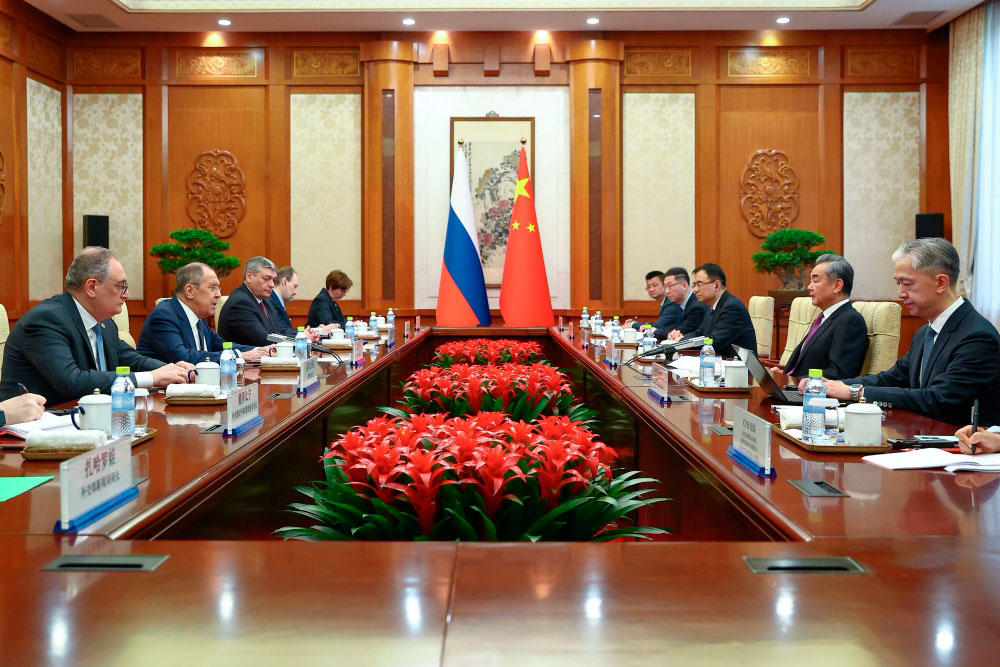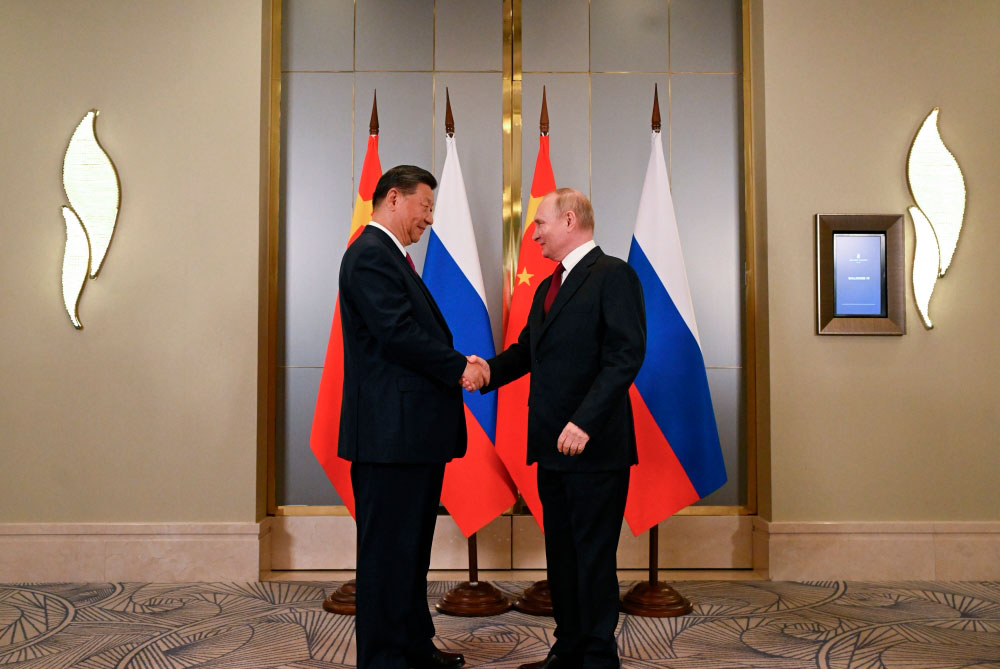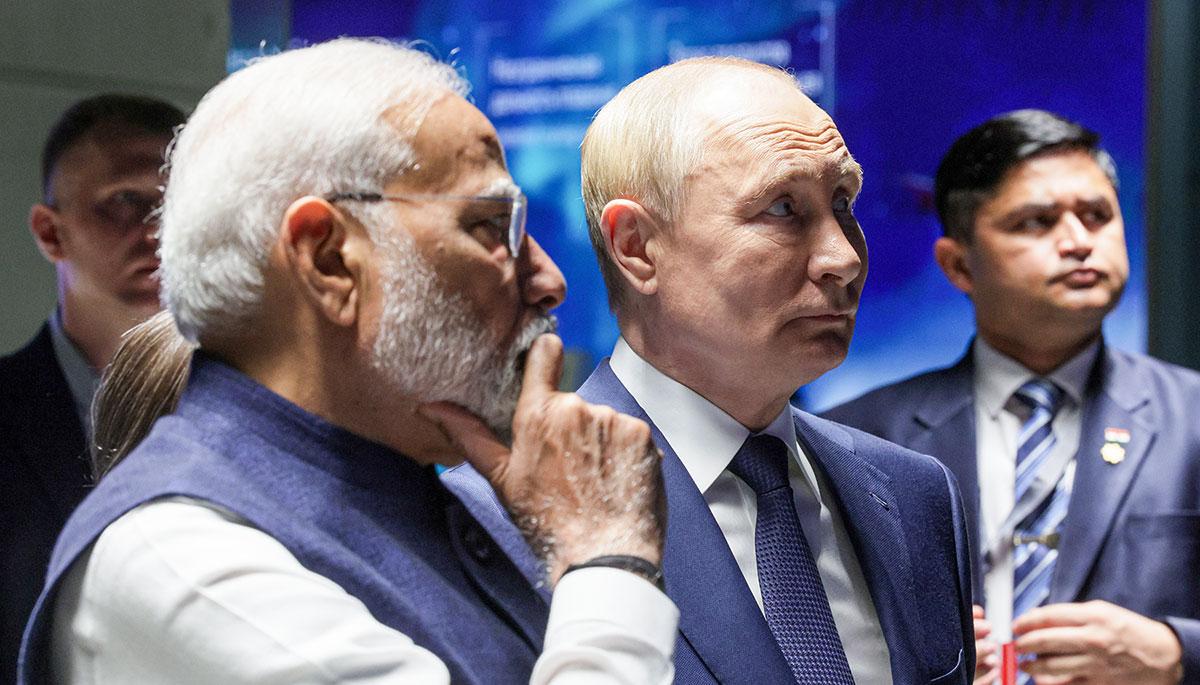Speaking at the Russian Foreign Ministry on June 14, 2024, Russian President Vladimir Putin revealed the key principles of the security architecture of Eurasia. The idea itself was voiced in the president’s message to the Federal Assembly on February 29. It is highly likely that it will become one of the supporting structures of the new Russian vision of security on the continent. The principles revealed by the president indicate that Eurasian security will be understood comprehensively.
It implies not only military-political issues, but also other areas. First of all, we are talking about economics. Economic security issues were explicitly identified as a separate dimension and include a wide range of issues — from poverty and inequality to climate and the environment. However, the further reference of the president’s speech to the policy of sanctions and the reliability of deposits in the debt obligations of Western states suggests that the key aspect of the economic dimension of Eurasian security architecture may be precisely the question of using the economy as a weapon; to protect against its use for political purposes.
Experience suggests that economic benefits can create conditions for political cooperation, but they do not protect against confrontation when it comes to fundamental security issues.
A specific feature of the modern global economy is the high level of globalisation of finance and trade relations. Globalisation has made it possible to significantly reduce costs, optimise supplies, and involve many economies in technological and value chains, contributing to their growth and modernisation. The US dollar has become a convenient instrument for international payments and reserves, and shared technological platforms have made it possible to stitch together a number of countries into interconnected and interdependent economic organisms. This has resulted in dense networks of economic interdependence. The problem is that the key nodes of such networks remained in the hands of Western countries, primarily the United States. The exploitation of networks of economic interdependence for political purposes must sooner or later undermine their credibility, but this has not prevented them from being used as weapons to an increasing degree over the past two decades.
First of all, we are talking about the politicisation of finance. The dominance of the US dollar in world payments has led to the fact that the “exclusion” of individual companies or individuals from dollar payments can cause significant economic damage. Trade and technological ties are being politicised. Sanctions against Russia are characterised by large-scale bans on exports and imports. Finally, transport and digital infrastructure are being used as weapons. Among the instruments are the introduction of a price threshold for the transportation of Russian oil, sanctions on significant transactions with the Iranian oil sector, and restrictions on the use of the sea and air space of the initiating countries, ports, airports, gateways and other infrastructure.
If economic ties and networks of interdependence are weaponised, then the logical response is to sever such ties or to diversify them. Obviously, from a market-based point of view, such steps are not always optimal, but they are inevitable due to the distortion of market relations by political measures such as sanctions. The main outlets of risk reduction correspond to the directions of politicisation.
The Eurasian economic security system can become a flexible and decentralised set of mechanisms that reduce “dependence on interdependence,” giving rise to a new reality of international economic relations.
Speaking at the Russian Foreign Ministry on June 14, 2024, Russian President Vladimir Putin revealed the key principles of the security architecture of Eurasia. The idea itself was voiced in the president’s message to the Federal Assembly on February 29. It is highly likely that it will become one of the supporting structures of the new Russian vision of security on the continent. The principles revealed by the president indicate that Eurasian security will be understood comprehensively.
It implies not only military-political issues, but also other areas. First of all, we are talking about economics. Economic security issues were explicitly identified as a separate dimension and include a wide range of issues — from poverty and inequality to climate and the environment. However, the further reference of the president’s speech to the policy of sanctions and the reliability of deposits in the debt obligations of Western states suggests that the key aspect of the economic dimension of Eurasian security architecture may be precisely the question of using the economy as a weapon; to protect against its use for political purposes. Let’s try to identify the possible components of the Eurasian architecture from the point of view of economic security.
Profit does not equal security
To begin with, in international relations, the relationship between economic gain and political cooperation is not always proportional and linear. Common sense dictates that economic cooperation should create the preconditions for non-confrontational political relations. Why ruin relationships that bring benefits by introducing political risks? This was one of the assumptions of Immanuel Kant’s “peace triangle” in his ideas for preventing wars between states: trade is a prerequisite for peace. The reality is more contradictory. The development of economic ties between the USSR and the countries of Western Europe, without any doubt, contributed to political dialogue. But the economic interdependence of the USSR and the CMEA countries did not protect the “Eastern bloc” from collapse, and a single economy did not prevent the collapse of the Soviet Union itself. The economic relations between Russia and the EU were distinguished by their enviable strength. But for political reasons, their deeper integration (for example, by letting Russian companies purchase shares in pipeline assets in the EU or in individual enterprises such as Opel) was slowed down. The high level of trade turnover could not stop the degradation of political dialogue against the backdrop of the Ukraine crisis.
Russia’s relations with Ukraine itself were also characterised by a high level of interdependence even after the 2014 crisis. This, however, did not reverse the political contradictions. Other examples are also indicative. The extremely high level of economic interdependence between China and the United States coexists with growing political competition and Washington’s attempts to hinder the technological growth of the PRC, including through the use of restrictive measures, and vice versa. The complex political relations between China and India are accompanied by a trade turnover of more than $100 billion. There are many examples of the non-linear connection between economics and international politics, especially in security matters. Experience suggests that economic benefits can create conditions for political cooperation, but they do not protect against confrontation when it comes to fundamental security issues.
Directions of politicisation
A specific feature of the modern global economy is the high level of globalisation of finance and trade relations. Globalisation has made it possible to significantly reduce costs, optimise supplies, and involve many economies in technological and value chains, contributing to their growth and modernisation. The US dollar has become a convenient instrument for international payments and reserves, and shared technological platforms have made it possible to stitch together a number of countries into interconnected and interdependent economic organisms. This has resulted in dense networks of economic interdependence. The problem is that the key nodes of such networks remained in the hands of Western countries, primarily the United States. American banks have become hubs for global financial transactions. Technology companies are suppliers of key components and solutions. Various Internet solutions are essential in the infrastructure of global communications. All these nodes remain under the jurisdiction of government agencies, whose function is to resolve security issues. The exploitation of networks of economic interdependence for political purposes must sooner or later undermine their credibility, but this has not prevented them from being used as weapons to an increasing degree over the past two decades. Several forms of such politicisation can be identified.
First of all, we are talking about the politicisation of finance. The dominance of the US dollar in world payments has led to the fact that the “exclusion” of individual companies or individuals from dollar payments can cause significant economic damage. Blocking financial sanctions today are one of the main instruments of US economic sanctions. They are actively used by the European Union, Britain, Canada and other countries. Russia has become a key target of such sanctions over the past two years. However, they are actively used against individuals from Iran, North Korea, China, and even US allies and partners such as Turkey and the UAE, although to a much lesser extent compared to the real adversary countries.
Trade and technological ties are being politicised. Sanctions against Russia are characterised by large-scale bans on exports and imports. Among the first are restrictions on the supply of a wide range of dual-use goods, industrial goods and services. Moreover, US legislation imposes export controls on those countries that use technology, industrial equipment, and software from the United States. Import restrictions are placed on Russian oil, petroleum products, gold, diamonds, steel and other goods. Export controls against China are being tightened, especially in the field of electronics and telecommunications. Chinese electronic services are banned in the United States, and certain companies are limited in the implementation of contracts with Western countries. Iran is under a total ban on the export and import of goods. Even stricter bans are applied to the DPRK. Even in EU countries, companies are forced to reckon with US export controls for fear of secondary sanctions.
Finally, transport and digital infrastructure are being used as weapons. Among the instruments are the introduction of a price threshold for the transportation of Russian oil, sanctions on significant transactions with the Iranian oil sector, and restrictions on the use of the sea and air space of the initiating countries, ports, airports, gateways and other infrastructure. Sanctioned individuals are disconnected from services that have become familiar, including email and aggregators of audio and video files, not to mention more applied Internet solutions in the field of engineering and other technical areas.
Target countries, for their part, are building a policy of countermeasures. Russia and China have introduced an instrument for blocking financial sanctions into their legislation. The export of industrial equipment from Russia is prohibited, and special measures have been introduced against economic entities from unfriendly countries. China is implementing a “dual circulation” system in strategic areas of the economy and investing in the development of its own technologies. Iran and especially the DPRK have long lived in conditions of partial or almost complete autarky. US allies are thinking about diversifying their financial assets.
Contours of the new architecture
If economic ties and networks of interdependence are weaponised, then the logical response is to sever such ties or to diversify them. Obviously, from a market-based point of view, such steps are not always optimal, but they are inevitable due to the distortion of market relations by political measures such as sanctions. The main outlets of risk reduction correspond to the directions of politicisation.
The diversification of financial settlements involves the use of currencies other than the US dollar in international settlements. National currencies solve the problem only partially. In the case of trading with such a large player as China, national currencies are a completely reasonable instrument, given the possibility of using the yuan in the large Chinese market. But already in trade relations between Russia and India — also a large economy — difficulties arise with the use of rupees. Even more complexities arise when trading with less developed or more specialised economic systems. Excess national currencies cannot always be spent. The costs of such transactions will generally be higher than in dollars. Strategically, a more universal mechanism is required that would be used by several large economies, for example, based on the BRICS. Similar work is underway, but it is premature to expect the rapid emergence of a “BRICS currency,” including due to technical reasons. In any case, the search for ways to diversify settlements is underway. Russia naturally finds itself at the forefront of this search, given the size of its economy and the scale of sanctions applied against the country.
The same applies to the creation of new technological chains, our own production facilities, and the search for alternative suppliers of industrial goods and technologies. The experience of the last two years has shown a critical vulnerability in the use of those products that contain Western components or other elements. Creating your own alternatives is not always optimal from a market-based point of view — your own replacements may turn out to be less effective and more expensive. However, given conditions of prohibitions, even such alternatives are a way out, not to mention the search for analogues in other markets. Today we see the creation of new value chains where they were difficult to imagine just a few years ago, especially in relations between Russia and China.
Infrastructural constraints have stimulated the emergence or scaling of many phenomena. Among them are “shadow” tanker fleets, alternative insurance systems, alternative exchanges, communication and Internet communications services. Large transport projects in Eurasia are returning to the agenda. In particular, progress is visible in the development of the North-South corridor.
It is obvious that the implementation of such projects will be difficult to fit into a single system for the entire Eurasian continent. The countries of the region are too different from each other, their relations with the United States and its allies in Eurasia are too different, and the economic differences are too strong. Rather, such a system can be built as a combination of many decentralised bilateral and multilateral formats. There may be financial instruments for transactions between individual countries, settlement systems for international associations like BRICS, technological projects in narrow areas, and targeted infrastructure solutions. However, the quantitative totality of such projects will generate qualitative changes. The Eurasian economy will gradually move away from the networks of interdependence that are now used as weapons.
Not everyone will refuse it, but a rational solution would be to have backup tools in the event of politicisation. The Eurasian economic security system can become a flexible and decentralised set of mechanisms that reduce “dependence on interdependence,” giving rise to a new reality of international economic relations.
First published in the Valdai Discussion Club.







